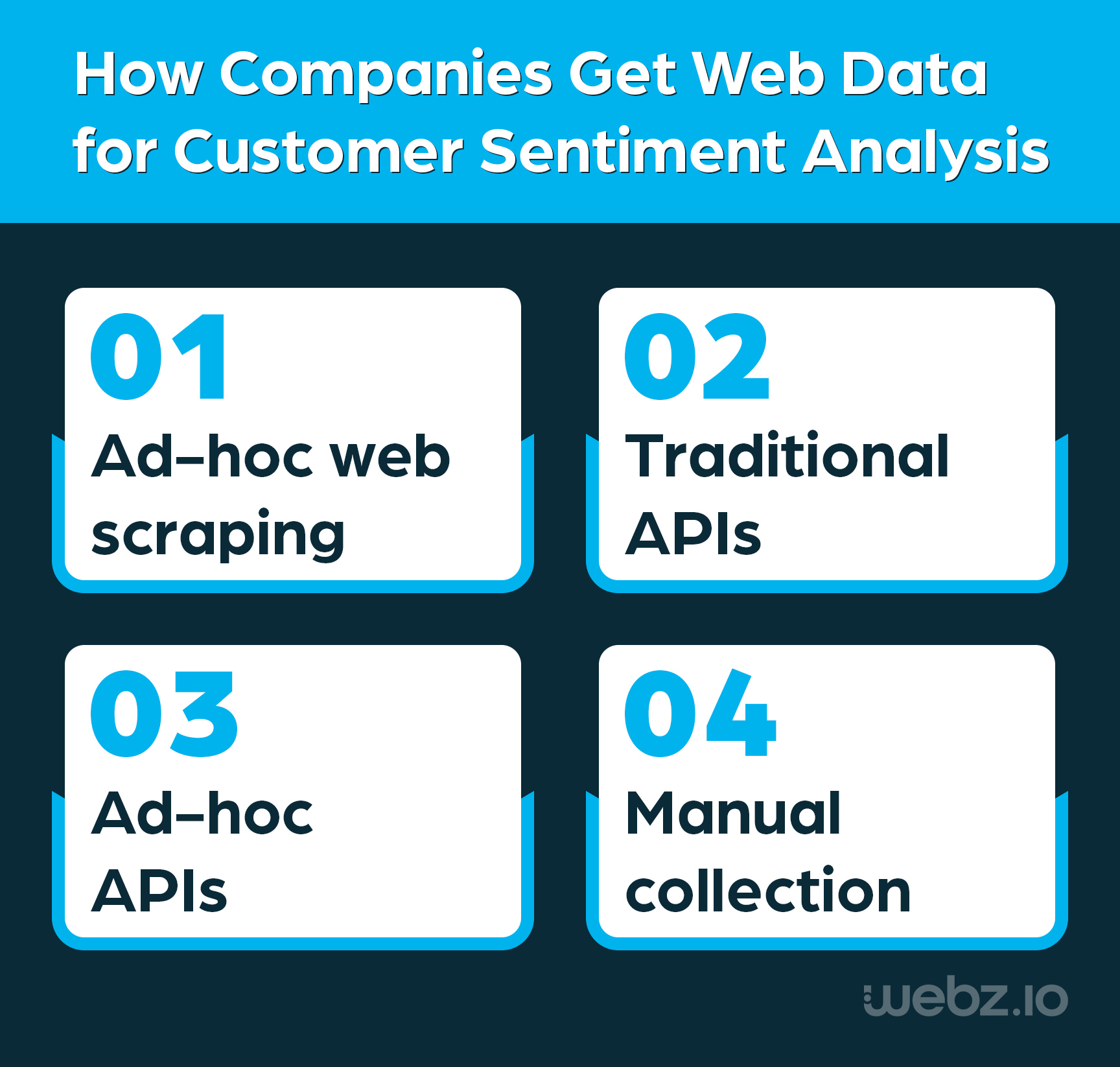How to Automate Supply Chain Risk Reports: A Guide for Developers
Do you use Python? If so, this guide will help you automate supply chain risk reports using AI Chat GPT and our News API.

Today, we see an increasing number of companies incorporating sentiment analysis into business processes — from market research and product innovation to brand monitoring and customer experience management. Sentiment analysis involves analyzing large volumes of data to gauge emotional responses from customers or the public. The challenge lies in obtaining enough relevant and timely data to understand how customers feel about products and brands.
You can find many sources of relevant data for sentiment analysis:
While you can get relevant information from internal systems and customer outreach, the open web contains a wealth of information about consumers. You can gain deep insights into customers by using web data for sentiment analysis.
The best method to collect web data depends on the source, and methods include:

Our Web Data 101 guide highlights the differences between ad-hoc web scraping and APIs that provide web data feeds.
Many sentiment analysis tools and platforms provide users with insights or reports based on the data ingested (with some help from machine learning). Some companies have started enhancing sentiment analysis solutions with AI. Regardless of the techniques used, sentiment analysis tools need quality, relevant data to work well.
The ways that companies get data — web scraping, APIs, manual collection — have their own set of challenges, which can include:
You can avoid these problems if you use an API that returns structured web data feeds.
Boost Your Sentiment Analysis with eCommerce API
To get a fuller picture of consumer sentiment, you should incorporate product reviews data with your platform or application. With the Webz.io eCommerce Reviews API, you can help your customers discover how consumers feel about their products, and ultimately, their brands. The Webz.io eCommerce Reviews API gives you:
The eCommerce Reviews API provides product and reviews data from 900+ eCommerce sources, including marketplaces and consumer packaged goods (CPG). Supported eCommerce and marketplace data sources include Amazon, Target, Walmart, and Wayfair. You also get data from growing categories such as travel and hospitality, restaurants, and job sites. You can see a complete list of supported data sources here.
With access to reviews data at scale, you can expand your data coverage so that sentiment analysis results are more representative and less biased. You also get reviews in multiple languages, so you can train your models to understand sentiment in more than one language. You can use our reviews data to obtain a fuller picture of customer sentiment.
The API provides structured product-specific reviews data, allowing users to get critical, unbiased information about customer sentiment. You can search for products by URL, keyword, or category, getting all the product and reviews data you need. By consuming high-quality data on an ad-hoc basis, users can obtain consumer sentiments for specific products and gain deep insights into their customers at any time and in near real-time. Plus, the data returned by the API is already cleaned, processed, and enriched, saving you a lot of preprocessing time.
We’ve created a ready-made, scalable solution to getting more high-quality data — you only have to integrate our API with your sentiment analysis platform or application. And we’ve already collected over one million structured product data and the one billion reviews that go with them.
You have many choices regarding where and how to get data, and the method you choose directly impacts the results of your sentiment analysis models. With the Webz.io eCommerce Reviews API, you can boost sentiment analysis by incorporating relevant data from massive streams of product reviews. More relevant data means you get a fuller picture of customer sentiment.
Interested in learning more about the eCommerce Reviews API? Talk to one of our data experts.

Do you use Python? If so, this guide will help you automate supply chain risk reports using AI Chat GPT and our News API.

Use this guide to learn how to easily automate supply chain risk reports with Chat GPT and news data.

A quick guide for developers to automate mergers and acquisitions reports with Python and AI. Learn to fetch data, analyze content, and generate reports automatically.